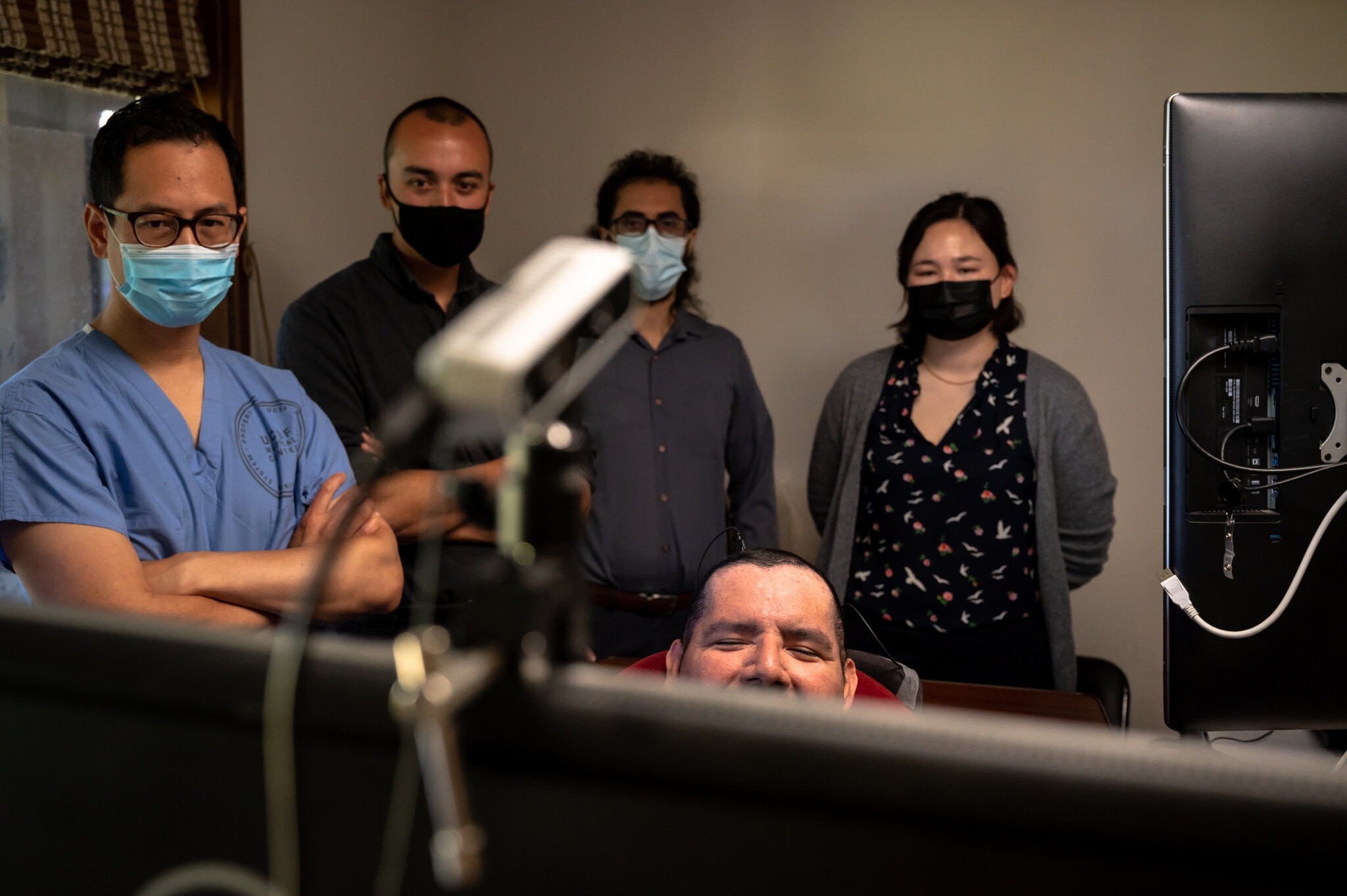He hadn't spoken since 2003, after being paralyzed from a stroke after a terrible car accident. Now researchers in the US have harnessed the areas of his brain dedicated to speech with an implant to allow him to produce understandable words and sentences just by trying to pronounce them. This world first was reported in the New England Journal of Medicine.
The Times recently shared the story of a man who has been speechless since 2003 and was recently able to speak through a screen. To do this, researchers implanted 128 electrodes in the areas of his brain dedicated to language . Specifically, this implant was designed to detect the signals of the various sensory and motor processes related to speech generated by the lips, jaw, tongue and larynx.
The researchers then gradually connected this implant to a computer. The patient (nicknamed Pancho) was then brought in to express several simple deaths. A specially designed AI program would then have to convert the electrical signals recorded by the electrodes in order to try to recognize the thought words. Then, little by little, the words turned into phases.
Brain implant word recognition is "a life-changing experience “, he told The Times. "Not being able to communicate with anyone, have a normal conversation and express yourself in any way is devastating, it's very hard to live like this ". During one of his learning sessions, Pancho also wrote the following words:"It really is like having a second chance to speak again “.
"Our system translates brain activity that would normally control his vocal apparatus directly into words and sentences “said David Moses, one of the team members. But nothing was guaranteed. “Maybe that part of his brain was dormant. We just didn't know if she would ever wake up so he could talk again “, explains Dr. Edward Chang, who led the research.

Instead of five words per minute with the mouse which he previously controlled by head movements, Pancho now communicates at the rate of 15 to 18 words per minute . Faster decoding may be possible, the researchers say, with the goal of approaching the rate of typical conversational speech of about 150 words per minute .
This new approach, called speech neuroprosthesis, is part of a wave of innovations aimed at helping tens of thousands of people who cannot speak , but whose brain still offers the neural pathways to do so. Eventually, the technique could help people with brain injuries or conditions such as amyotrophic lateral sclerosis or cerebral palsy, where patients lack muscle control to speak.